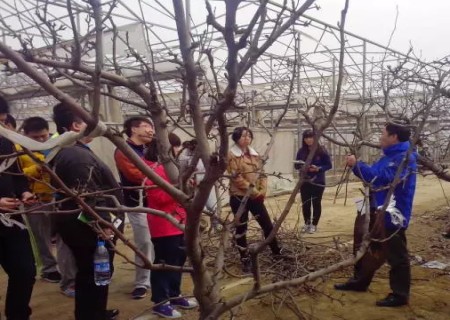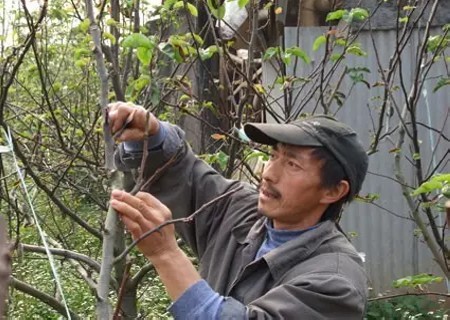Cutting and grafting techniques of Pear trees
Pear branch grafting can be divided into split grafting, tongue grafting, leaning grafting and other forms, the most commonly used is split grafting, cutting grafting. Cutting is often carried out in early spring (mid-late March) when trees begin to sprout but have not yet sprouted. It is appropriate for the rootstock to be 2 cm in diameter and 3 cm in diameter. Cross-cut the rootstock at 2 cm from the base of the branch, cut it vertically where the skin is thick and smooth, with a depth of about 3 cm, cut the scion with 3 full buds into two sections, insert the split of the rootstock, align the formation layer of the scion and the rootstock, and tie it tightly with hemp or film.

This method is suitable for site grafting of rootstocks with thick 1~2cm root neck, and it is a commonly used method in branch grafting.
Cutting scion: scion is usually long 5~8cm, with 2-3 full buds is suitable. Cut the lower part of the scion into one long and one short, the long face is on the same side of the lateral bud, cut off the essential part of lmax 3 or more, the length is about 2~3cm, and cut a horseshoe-shaped bevel on the opposite side of the long surface, the length is about 1cm.
Rootstock treatment: cut the rootstock at 5~8cm off the ground. Select the place where the rootstock skin is thick, smooth and smooth, cut the cutting surface of the rootstock flat, and then cut straight down at the edge of the essential part. The width of the notch is equal to the diameter of the scion and the depth is generally 2~3cm.
Joint: cut the scion inward and insert it into the cut of the rootstock. Align the scion with the forming layer of the rootstock. If you can't align both sides, you can align one side.
Binding: wrap it tightly with plastic and wrap all the cracks and cuts tightly. Be careful not to touch the scion when binding.
Time: 2019-06-09 Click:
- Prev

Grafting technique of embedded Bud of Pear Tree
Due to the physiological characteristics or improper management of pear varieties, pear main branches (dry) bare legs, resulting in inner and outer density, thin and weak fruit branches, ineffective consumption of nutrients, small fruit, poor quality and low yield. In order to solve this problem, we have been groping for several years.
- Next

High yield methods of pear trees after grafting
Pear is widely cultivated in the north and south of China and has strong adaptability. Resistant to rough management, easy to early fruit and high yield, long economic life. The fruit is resistant to storage and transportation, good merchandise and long supply period, so it is deeply welcomed by domestic and foreign markets. The purpose of grafting is to optimize tree quality, enhance resistance and promote high yield. Have a good grasp of the ratio of output to joint. Practice has proved
Related
- Fuxing push coffee new agricultural production and marketing class: lack of small-scale processing plants
- Jujube rice field leisure farm deep ploughing Yilan for five years to create a space for organic food and play
- Nongyu Farm-A trial of organic papaya for brave women with advanced technology
- Four points for attention in the prevention and control of diseases and insect pests of edible fungi
- How to add nutrient solution to Edible Fungi
- Is there any good way to control edible fungus mites?
- Open Inoculation Technology of Edible Fungi
- Is there any clever way to use fertilizer for edible fungus in winter?
- What agents are used to kill the pathogens of edible fungi in the mushroom shed?
- Rapid drying of Edible Fungi

